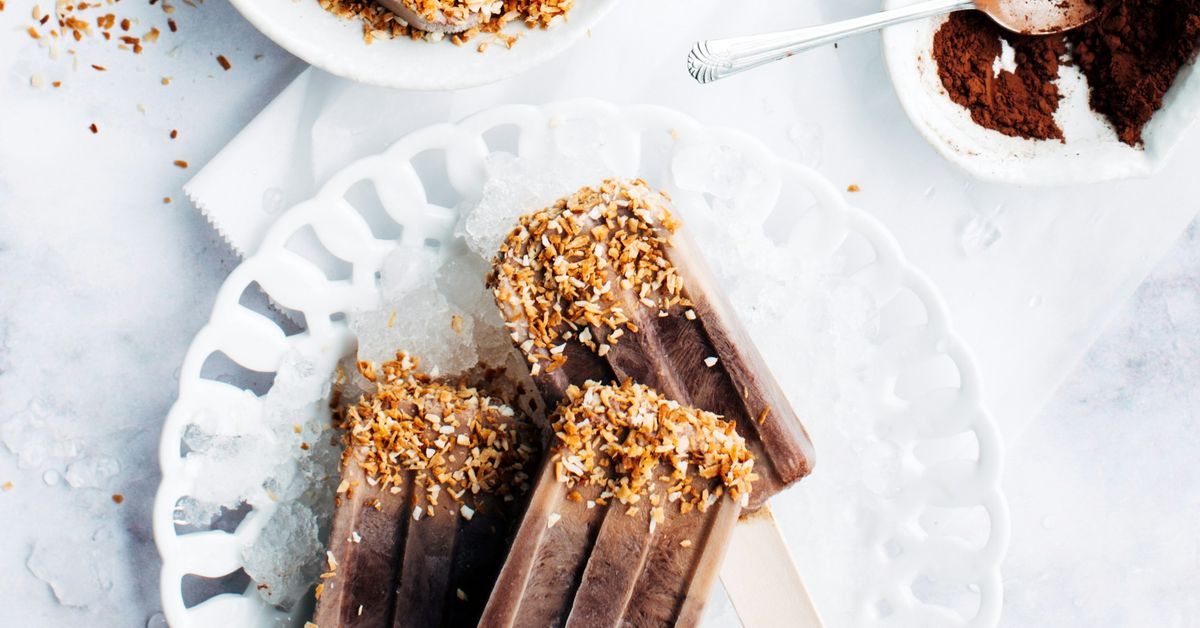Discover the Food Science Behind Why Your Bread Isn’t Rising as It Should!
There’s something almost magical about the smell of freshly baked bread wafting through your kitchen. It evokes memories of cozy family gatherings, lazy Sunday mornings, and the delightful crunch of a crust breaking open to reveal soft, warm goodness inside. Yet, when you find yourself staring down at a loaf that stubbornly refuses to rise, well, it’s enough to make even the most seasoned baker question their skills. So, what gives? Why is your bread flat, dense, or lacking that perfect airy structure? Let’s dive into the deliciously complex world of bread-making science to uncover the reasons your dough might be acting out.
The Basics of Bread-Making: A Brief Overview
Before we get too deep into this yeast-filled rabbit hole, let’s recap the fundamental ingredients and their roles in the bread-making process. The classic bread recipe usually includes:
- Flour: The backbone of bread, providing structure and gluten.
- Water: Activates the gluten and helps dissolve the other ingredients.
- Yeast: The magical organism that ferments sugars, producing carbon dioxide and alcohol—essential for that lovely rise.
- Salt: Enhances flavor and strengthens the gluten network.
- Optional ingredients: These can include sugar for sweetness, fats for tenderness, or other flavorings.
So, the stage is set. With these components in hand, you embark on your baking journey, only to find that pesky loaf flat as a pancake. Let’s explore some common culprits behind this bread-baking dilemma.
Yeast: The Unsung Hero… or Villain?
Ah, yeast—the tiny, single-celled fungi responsible for fermentation. Without it, we’d be left with hardtack instead of fluffy bread. But yeast isn’t just about throwing a packet into your mixing bowl and hoping for the best. Here are some critical factors to keep in mind:
1. Yeast Activation
Did you know that yeast is a bit like a toddler? It needs the right environment to thrive. If you’re using active dry yeast, it typically requires activation in warm water (around 100°F to 110°F). Too hot, and you’ll kill the little guys—too cold, and they’ll snooze through your entire baking session. I remember the first time I tried to rush the process by adding boiling water. Spoiler alert: it didn’t end well.
2. Yeast Quantity
Using too little yeast can lead to a loaf that refuses to rise, while too much can create a bread that rises too quickly and collapses. A common mistake many home bakers make is to mismeasure the yeast. Some sources suggest using about 2 to 3 teaspoons of yeast per 4 cups of flour. However, it always pays to double-check the specifics of your recipe.
3. Yeast Freshness
Even the best bakers have their off days, and using expired yeast can lead to disastrous results. (I once made a loaf that looked like it had been through a tornado because of this very reason!) Always check the expiration date on your yeast packet, and store it in a cool, dry place to maintain its potency.
The Role of Temperature
Temperature plays a significant role in the fermentation process. If your kitchen resembles a sauna, the dough might rise too quickly and then collapse—like that one friend who has one too many at a party. Conversely, a cold environment can lead to sluggish fermentation, resulting in dense bread.
1. Ideal Rising Temperature
The sweet spot for rising dough is typically around 75°F to 80°F. If it’s too cold, consider placing your dough in a warm, draft-free spot or even turning on your oven for a few minutes and then turning it off to create a cozy environment. Just remember—don’t bake your dough, that’s a different type of disaster!
2. Cold Fermentation
On the flip side, cold fermentation (storing your dough in the fridge for an extended period) can produce excellent flavor and texture. Yet, if you’re not familiar, this method can be tricky, and if done improperly, it can lead to an underdeveloped rise.
Flour: The Structure Provider
Flour is your dough’s best friend, but not all flours are created equal. The type of flour you choose can significantly impact your bread’s texture and rise.
1. Gluten Development
Gluten, the protein found in wheat flour, is what gives bread its structure. The more you knead, the more gluten develops. If you’re using a low-protein flour (like cake flour), it won’t create enough gluten to support a decent rise. Conversely, bread flour, with its higher protein content, is ideal for creating that chewy texture and lofty rise.
2. Hydration Levels
Flour also has varying absorption rates for water. If you’re using a flour that absorbs too much water, your dough may end up too sticky to rise properly. A general guideline is to have a hydration level of around 60% to 65% for most bread recipes. This can be a bit of trial and error, especially if you’re using a new flour brand.
Mixing and Kneading: The Art of Dough
Now that you’ve gathered your ingredients, let’s talk about how you combine them. Mixing and kneading not only blends your ingredients but also develops gluten. Here’s where the balance between under-kneading and over-kneading comes into play.
1. Under-Kneading
If you skimp on kneading, your dough may not develop enough gluten structure. This can lead to a loaf that’s flat and dense—definitely not what you want. (I once had a loaf that could’ve doubled as a doorstop because I was too eager to bake.) Aim for a smooth, elastic dough that springs back when you poke it.
2. Over-Kneading
On the other hand, over-kneading can cause the gluten to become too tight, making it difficult for the dough to rise. It’s a delicate balance, and you’ll get the hang of it with practice. Remember, your dough should feel smooth and slightly tacky but not overly sticky.
Timing: The Waiting Game
Good things come to those who wait, and this couldn’t be truer in the world of bread-making. Timing is crucial, especially during the fermentation and proofing stages.
1. First Rise
The first rise—also known as bulk fermentation—allows the dough to develop flavor and texture. Depending on your recipe and environmental conditions, this can take anywhere from 1 to 3 hours. Be patient! If you rush this step, you’ll end up with a loaf that’s more like a brick than a soft, fluffy delight.
2. Final Proof
After shaping your dough, the final proof is equally essential. This is where the dough develops its final structure. If you bolt the bread into the oven too soon, it can result in a tight crumb and insufficient rise. A good rule of thumb is to let the dough double in size before baking.
Humidity: The Silent Influencer
Depending on where you live, humidity can play a significant role in how your bread turns out. In high-humidity environments, flour can absorb more moisture, leading to an overly sticky dough that might not rise as expected. Conversely, in dry conditions, your dough might end up too dry, inhibiting yeast activity.
1. Adjusting for Humidity
Don’t be afraid to adjust your flour and water ratios based on the weather. If the air is heavy with moisture, consider reducing the water slightly. If it’s dry, you might need to add a splash more. It’s all about finding that sweet balance. (And yes, I’ve learned this the hard way more than once.)
Salt: The Flavor Enhancer with a Catch
Salt is essential for flavor, but it also has a crucial role in regulating yeast activity. Too much salt can inhibit yeast growth, leading to a loaf that refuses to rise.
1. Salt Quantity
A good rule of thumb is to use around 1.5% to 2% of the total flour weight in salt. If you’re using a recipe, be sure to stick to the recommended amounts. (I once thought more salt meant better flavor—let’s just say my bread was not winning any awards that day!)
Common Mistakes to Avoid
Even the best bakers have their off days. Here are some common pitfalls that can keep your bread flat:
- Skipping the autolyse: This resting period allows flour to hydrate and gluten to begin forming, which can dramatically improve your bread.
- Neglecting to check your oven temperature: An oven that’s too hot or too cold can ruin your hard work. Use an oven thermometer to ensure accuracy.
- Overloading with add-ins: Ingredients like nuts or dried fruit can weigh down your dough. If adding, do so sparingly.
Conclusion: Baking Is Both Science and Art
At the end of the day, baking bread is as much about understanding the science as it is about following the art of recipes. Each ingredient plays a crucial role in the final outcome, and even the slightest deviation can lead to a loaf that falls flat or rises beautifully. So, the next time your bread doesn’t rise as it should, take a moment to reflect on the steps you’ve taken. Remember, even the most experienced bakers have their flops. With patience and practice, your perfect loaf is within reach!
So, roll up those sleeves, gather your ingredients, and dive into the world of baking with a bit more knowledge and perhaps a little less frustration. After all, bread-making is not just a science—it’s a delicious adventure waiting to happen.




